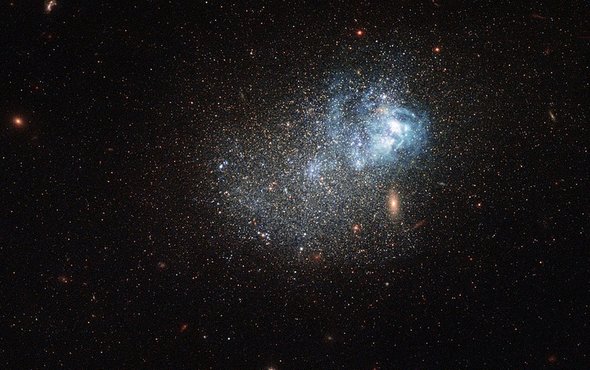Ancient Creation Stories and Narratives
 Is the Bible just another one of many ancient creation stories, or is it different?
Is the Bible just another one of many ancient creation stories, or is it different?
The Lord God, the Almighty . . . made the whole universe”—Revelation 4:8,11 NJB
In contrast to the Biblical creation narratives, ancient creation stories from Mesopotamia, Egypt and Syria-Palestine do far more than try to explain how the physical world came into being. Creation myths often elevated the particular god of a particular shrine to supremacy over all other gods in order to validate the prestige of that deity, that shrine or the city in which the shrine was located.
For example, Egyptian creation myths tend to assert that a primordial mound or “Island of Creation” arose from a primeval ocean and that a specific god created all things from that location. Several Egyptian shrines, however, claimed to be the site of that primordial mound and asserted that the god of their respective shrine was the great creator god.
At Memphis, it was Ptah. At Hermopolis, it was Thoth. At Heliopolis, it was Re-Atum. Here a sacred stone was said to mark the very spot where Re-Atum, in the form of a “Bennu” bird, alighted and initiated the creative process.
Common motifs in creation myths include a spontaneous generation of gods, sexual reproduction among gods and the deification of nature (e.g., of the sun and moon). A creation myth often focuses on geographic and other elements unique to the shrine associated with the myth. An Egyptian myth, for example, may pay special attention to the creation of the Nile.
Sometimes creation myths relate battles between gods and the monsters of a primeval, watery chaos, through which one or more deities rises to supremacy. Sometimes creation occurs when a god defeats a primeval monster and divides its body into two parts, which become heaven and earth or earth and sea, etc. The Babylonian creation myth Enuma Elish describes the god Marduk’s defeat ofTiamat,the mother-goddess and sea monster. After a terrible battle in which Marduk slays Tiamat, he cuts her body in half like “a fish for drying” and uses it to form the heavenly dome. This victory purportedly establishes Marduk’s supremacy among the gods.
Greek creation myths are similar. After initial chaos, the primordial deities Gaia (earth-goddess) and Uranus (sky-god) emerge. A series of monster-like gods (such as Cronos, Typhon and the Titans) is born to them, but Zeus (son of Cronos) defeats these beings and establishes the present world order.
Humans in creation myths from various sources are typically created as drudges to perform the gods’ “dirty work.” Some myths depict humans as the gods’ slaves, whose primary function it is to feed them with their sacrifices.
The Genesis account implicitly challenges the claims of these ancient creation stories and myths by affirming God’s unity and sovereignty, by portraying the heavenly bodies and great sea creatures as his creations and by presenting humans as God’s stewards—and indeed image bearers—rather than as an afterthought born of divine need or laziness.
The Genesis creation narrative refers to the sun and moon as the “great light” and the “small light.” Why? By describing these celestial bodies in this way, the Bible reduces them to the status of mere physical objects that “rule” only in the sense that they emit light and demarcate the calendar. In contrast, in many ancient languages the words translated “sun” and “moon”also refer to the sun god(dess) or moon god(dess). For instance, the Hebrew word translated “sun” is shemesh, but Shamash is also the name of the Mesopotamian sun god. The Greek word translated “moon,” selene, is aIso the proper name of a Greek moon goddess. Similarly, the ancients regarded the stars (or constellations) as divine beings. In contrast, the terse Biblical statement “He also made the stars” (Ge 1:16) demotes these bodies to the status of created objects.
The Genesis account rejects the central motif of pagan religion: the deification of nature. Interestingly, it does not seek to elevate Yahweh over other gods. Indeed, in the seven-day creation account (Genesis 1:1 —2:3), Yahweh is not named; the Creator is simply referred to as “God” (Elohim), a more generic term. Even Genesis 2-3 provides no sense, or context, that Yahweh needed to establish his supremacy over other deities. There is no conquest of other gods or monsters, and no shrine or city is said to be the place from which God began the creative process. No sacred object is mentioned. The God of Genesis 1 is indeed the universal God.
One
Source: New International Version Archaeological Study Bible